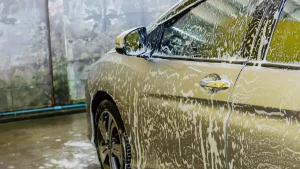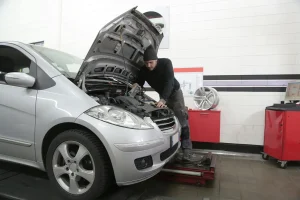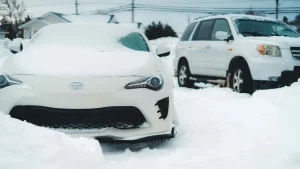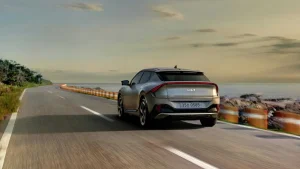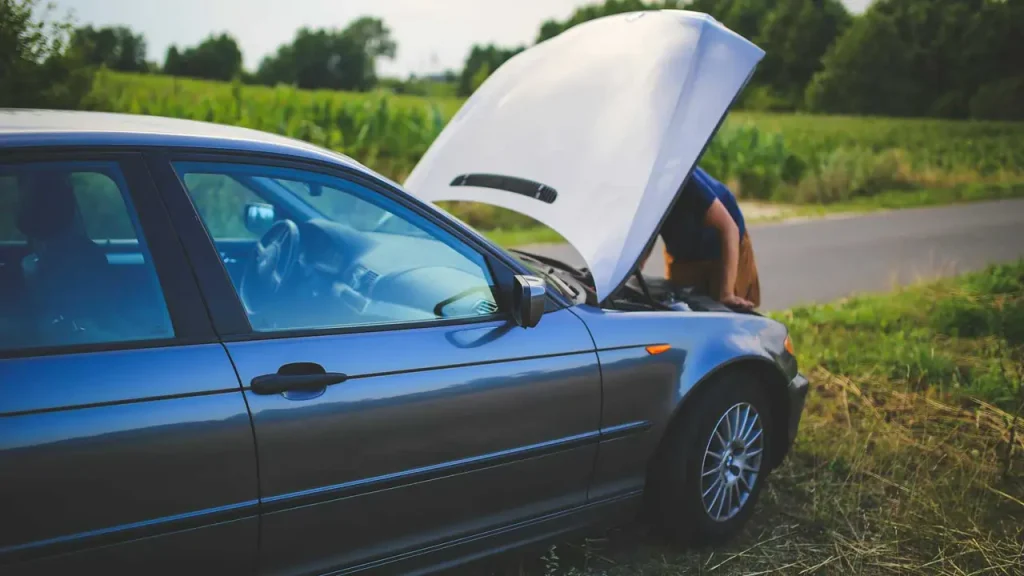
car breakdown guide The Ultimate Resource for UK Drivers
There’s a specific, gut-wrenching feeling that comes with it. The sputter. The judder. The sudden, ominous silence as your car coasts to a dead stop on the side of the road. It’s a moment of pure helplessness. I remember it happening to me on a rainy Tuesday evening, the rhythmic thump of the windscreen wipers mocking my predicament.
That sinking feeling is precisely why I’ve put together this comprehensive car breakdown guide. It’s not just a set of instructions; it’s your roadmap back to confidence when the unexpected happens. Forget panic. It’s time to get prepared. Because a breakdown is just a problem waiting for a solution, and you’re about to have all the solutions you need.
Navigating the Unexpected: Your Comprehensive Car Breakdown Survival Guide
Let’s be honest, nobody plans to break down. But planning for a breakdown? That’s just smart. It transforms a potential crisis into a manageable inconvenience. This isn’t just another car breakdown guide; it’s a toolkit for empowerment. From the silent dread of a dead battery to the hiss of an overheating engine, we’ll cover it all. You’ll learn how to stay safe, what to check, and who to call. Think of this as your new best friend in the glovebox. Ready?
Essential Preparations: Building Your Car Emergency Kit
Your boot shouldn’t just be for groceries and forgotten gym gear. It’s the home of your emergency kit. What to keep in car for emergency kit, you ask? Think of it as your car’s first-aid box.
You absolutely need a high-visibility jacket, a warning triangle, and a torch (check the batteries occasionally, for goodness sake). I’d also add a power bank for your phone, a first-aid kit, some sturdy gloves, and a warm blanket. And water and snacks. Always snacks.
Compiling an essential car breakdown kit items list is the first, and arguably most important, step in being ready for anything the road throws at you.
Proactive Prevention: The Importance of Regular Vehicle Maintenance
The best way to handle a breakdown is to avoid it altogether. Groundbreaking, I know. But seriously, regular maintenance is your secret weapon. Ignoring that little oil light or putting off your service is like daring your car to fail at the worst possible moment. Knowing how to prevent common car engine problems starts with the basics: regular oil changes, checking your fluid levels, and listening for strange noises. Don’t just drive your car; get to know it. Understanding the most frequent causes of car breakdowns—like battery failure and tyre issues—gives you a massive head start. For a deeper dive, exploring some expert car maintenance tips for longevity can make all the difference between a smooth journey and a roadside wait.
Immediate Steps: What to Do When Your Car Breaks Down
Okay, it happened. The engine’s off. First, don’t panic. Easy to say, harder to do. Take a deep breath. Your first actions are critical. Signal and try to coast to a safe location, as far off the road as possible. Put your hazard lights on immediately. Once you’ve stopped, turn your wheels away from the road and apply the handbrake. This simple sequence is the start of every safe resolution. It’s the core of any good car breakdown guide.
Safety First: Securing Your Vehicle and Yourself
Your personal safety is non-negotiable. Once stopped, decide if it’s safe to exit the vehicle. If you’re on a busy road, especially a motorway, exit via the passenger-side door, away from traffic. Get behind the safety barrier if there is one. Wear your high-vis jacket. Place your warning triangle at least 45 metres behind your car to give other drivers ample warning. These are not just suggestions; they are crucial car breakdown safety tips for drivers. Following the right steps for what to do if car breaks down on motorway can be a literal lifesaver. Your car is replaceable; you are not.
Troubleshooting Common Issues: Flat Tires, Overheating, and More
With the immediate safety checklist handled, you might be able to identify the problem. Is there steam coming from the bonnet? Is a tyre completely flat? Or was it just a sudden, silent stop? Some issues are more common than others, and having a basic diagnostic mindset can save you time and stress. This part of our car breakdown guide will walk you through the big three.
A Step-by-Step Guide to Changing a Flat Tire Safely
A flat tyre is one of the most common—and fixable—roadside issues. Before you even start, make sure you’re on a flat, stable surface, well away from traffic. You’ll need your spare, a jack, and a wheel wrench. Loosen the wheel nuts slightly before jacking the car up. I learned that the hard way once, trying to wrestle with impossibly tight nuts while the car was wobbling precariously. It was not fun. Jack the car up, remove the nuts completely, swap the wheels, and then tighten the nuts in a star pattern. Lower the car and do a final tighten. This is the ultimate step by step guide to changing a flat tire.
How to Address an Overheating Engine Effectively
Steam from the engine is an immediate “pull over now” signal. One of the main reasons why car engine overheats suddenly is a coolant leak or a faulty fan. Turn off the engine immediately but do NOT, under any circumstances, open the radiator cap. The system is highly pressurised and boiling hot. You’ll just have to wait. Let it cool down completely, which can take over an hour. Once cool, you can check the coolant level. If it’s low, you may have a leak. This is a situation that often requires professional help.
Jump-Starting Your Car: A Quick and Safe Guide
The dreaded click-click-click of a dead battery. We’ve all been there. Knowing how to jump start a dead car battery safely is a skill every driver should have. You’ll need jump leads and another car. Park the cars close but not touching. Turn both engines off. Connect the red lead to the positive (+) terminal of the dead battery, then the other end to the positive terminal of the working battery. Connect the black lead to the negative (-) terminal of the working battery, and the final end to a solid, unpainted metal surface on the dead car’s frame. Start the working car, wait a few minutes, then try starting the dead one. It’s a game-changer.
Calling for Help: Roadside Assistance and Beyond
Sometimes, a DIY fix isn’t on the cards. Knowing who to call when car breaks down is paramount. This is where roadside assistance becomes your guardian angel. Have the number saved in your phone. When you call, be ready with your location, your vehicle details, and a description of the problem. They’ll give you an estimated arrival time and advice on what to do while you wait. A truly useful car breakdown guide must emphasize this point: don’t be a hero if you’re out of your depth.
Choosing the Best Roadside Assistance Provider
So, is car roadside assistance really worth it? In my opinion, absolutely. The peace of mind alone is worth the annual fee. When choosing, don’t just look at the price. Compare what’s included: home start, national recovery, onward travel options. Some plans cover the car, others cover the driver in any vehicle. Read the reviews, check the average response times, and pick a plan that matches your driving habits. It’s an investment in your safety and sanity. Every driver should consider this.
When to Call a Mechanic vs. DIY Fixes
The line between a DIY fix and a “call the mechanic” situation can be blurry. My rule of thumb: if it involves tyres, batteries, or bulbs, I might give it a go. If it involves strange noises from the engine or gearbox, smoke (of any colour), or complex warning lights, my phone is out, and I’m calling a professional. Don’t let a small problem become a catastrophic one by trying to fix something you don’t understand. This principle is a core part of any responsible car breakdown guide.
Alternative Transport: Rental Cars and Car Sharing Solutions
If your car is out of commission for a while, you still need to get around. Some premium roadside assistance plans include a replacement vehicle. If not, you’ll need to sort your own. This is where knowing your options is key. Having a good UK car rental and car sharing guide bookmarked can save you a world of hassle, allowing you to quickly find a temporary solution and get on with your life while your car is in the shop.
Understanding Your Vehicle: Recognizing Warning Signs and Avoiding Future Breakdowns
Your car talks to you. It whispers through squeaks, whines, and rattles. It shouts through dashboard warning lights. Learning its language is the key to preventing breakdowns. Pay attention to changes in performance, weird smells, or vibrations. These are often early signs your car is about to break down. This isn’t just a car breakdown guide for when things go wrong; it’s also a guide to keeping them from going wrong in the first place.
Dashboard Warning Lights: What They Mean for Your Car’s Health
The dashboard can light up like a Christmas tree, and it’s rarely a celebration. Understanding car dashboard warning light symbols is vital. A simple colour code helps: red means stop now, it’s serious. Amber or yellow means caution, get it checked soon. Green or blue is usually informational. A flashing light is almost always a sign of an urgent problem. Your car’s manual will have a full list. Don’t ignore them.
The Impact of Driving Habits on Car Reliability
How you drive matters. A lot. Aggressive acceleration, hard braking, and riding the clutch all put extra strain on your vehicle’s components, leading to premature wear and, eventually, failure. Smooth, defensive driving isn’t just safer; it’s better for your car’s health and your wallet. This is one of the most overlooked car breakdown safety tips for drivers.
How Modern Vehicle Technology Enhances Safety and Prevents Issues
Modern cars are packed with technology designed to keep you safe and prevent breakdowns. Systems like Tyre Pressure Monitoring (TPMS) alert you to a slow puncture before it becomes a blowout. The Engine Control Unit (ECU) constantly monitors performance and can flag potential issues early. The ongoing evolution of tyre and vehicle safety technology development means cars are getting smarter and more resilient every year, providing an extra layer of protection.
Staying Prepared: Continuous Learning for Confident Driving
Confidence behind the wheel comes from more than just passing your test. It comes from being prepared for anything. This car breakdown guide is a fantastic start, but the learning should never stop. Stay curious, watch tutorials, and maybe even take a basic car maintenance course. The more you know, the less you’ll fear.
Advanced Driver Training for Breakdown Prevention
Think advanced training is just for performance drivers? Think again. Courses that focus on mechanical sympathy and vehicle dynamics can make you a much smarter driver. Learning to anticipate road conditions and handle your car more smoothly directly contributes to its longevity. This kind of advanced driver training for car emergencies and prevention is an investment in both your car and your safety.
Future of Car Reliability: Autonomous Systems and Vehicle Diagnostics
The future is already here, in many ways. Cars are becoming more capable of diagnosing their own problems and even alerting you before a component fails. As we move towards more advanced systems, the landscape of vehicle maintenance will change. The role of autonomous vehicles and robotics in cars will likely reduce human-error-related breakdowns, with cars capable of performing self-checks and booking their own service appointments. What a world. This forward-looking perspective is essential for any modern car breakdown guide.
Drive Smarter, Drive Safer: Concluding Thoughts on Car Breakdown Preparedness
No one wants to be stranded on the side of the road. But with the right preparation, knowledge, and mindset, it’s an event you can manage with confidence. From building your emergency kit to understanding your car’s warning signs, every small step you take makes you a more resilient driver. This car breakdown guide has given you the tools. Now, it’s up to you to use them. Check your tyre pressure, build that kit, and save that roadside assistance number. Drive safe out there. You’ve got this.



